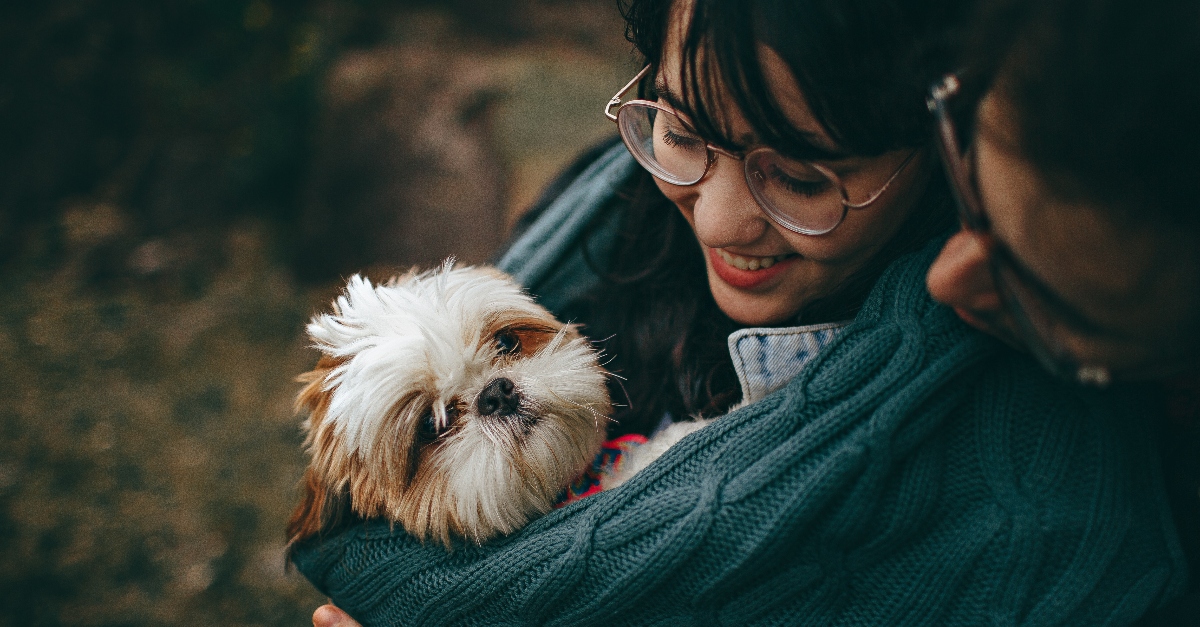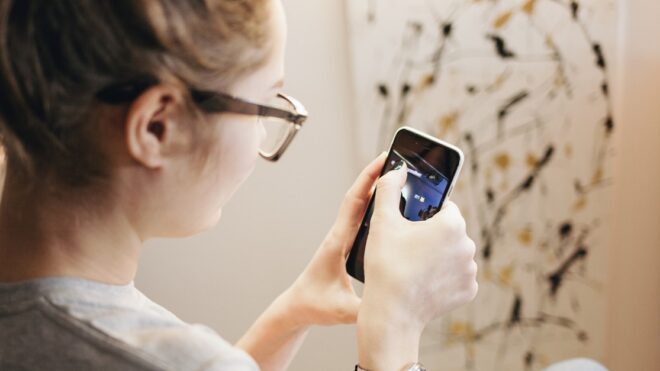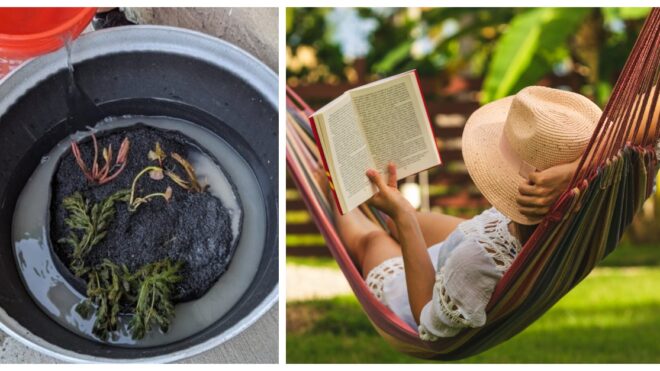
Most of 2020 has been very troubling and tumultuous for all of humanity. There is a tremendous amount of uncertainty and even fear right now, and a lot of people feel untethered. This is all to be expected: We are, after all, in the midst of a global health crisis. However, there are still opportunities to reach out and find something light and unencumbered to help get you through, and it turns out that one of the best ways to bring a little joy to your day is fostering a pet during this extended time of staying at home.
Fostering a pet inherently brings a lot of good things to one's life whenever you do it. Pets have a wonderful way of alleviating anxiety, and there are few things as satisfying as having a sweet little furry creature curl up next to you while you watch Harry Potter for 8,245th time.
It turns out that there are even more benefits that come from fostering a pet right now. LittleThings recently spoke to animal rescue expert Michelle Sherman, and she explained just how amazing fostering a dog or cat can be for nearly all of us.
Michelle kicked things off by explaining that she has always been "an animal person." By her account, she was definitely a big fan of animals when she was young. In fact, Michelle began working as a kennel technician at a local vet clinic when she was only 15 years old, which is where she first learned about animal rescue and about fostering pets.
While working at the clinic, Michelle met a woman who ran her own dog training company — and who was open to teaching Michelle the ropes of animal care. Michelle eventually moved to Chicago and opened up her own dog training company in the city while volunteering at the nearby Naperville Area Humane Society (where she eventually was hired as an adoptions specialist). These days, Michelle works for a large city municipal shelter and volunteers at Mutt Misfits Rescue Society.
Foster families for pets have never been more important than they are right now. While it's true that shelters are always on the lookout for new foster families, the health crisis has added extra weight to their efforts. Since a lot of people aren't sure what's going to happen next in their lives, they aren't adopting as many pets, which means there are tons of dogs and cats languishing in shelters when they could be cuddling in someone's home.
Michelle said that there are definitely tons of benefits to fostering: "Having a new pet in your home is a lot of fun! It helps keep you moving when maybe you feel like being a couch potato. It helps you feel good because you know you're the reason why this innocent animal has a roof over their head."
Plus, fostering could be even more amazing for you during this protracted health crisis, especially if you haven't been able to see a lot of other people:
"We are all navigating this new world of sheltering in place or quarantining. One thing I think a lot of us would agree with is that it can be incredibly lonely and isolating. Bringing a new pet into your home, even if only temporarily, can help elevate our spirits, ward off depression, and keep those quarantine pounds off. For those of you working from home, it's a nice change from the daily mundane! I've also found that it's beneficial for my own pets to bring a foster pet into the home. My newest foster, Pippin, has kept my active border collie entertained many nights!"
Michelle definitely speaks from personal experience — in addition to working with animals who are available for foster care and adoption, she's also currently fostering one dog (and already has two dogs of her own).
Michelle added that foster-to-adopt programs exist, and they're a great way to get to know an animal slowly (and to let them get to know you) before you make a decision to definitely adopt.
"Foster-to-adopt programs have a huge benefit to people because you bring a pet home with the intention of fostering it. You see how they do with your family before making a permanent commitment. If they're a good fit, you'll be first in line to adopt! If you're not a great fit for that pet, or the pet isn't a great fit for you, it's easier to let them go get adopted."
As someone who has a whole bunch of pets but who has never fostered animals, I was super curious to know how foster programs usually work. Michelle was happy to provide a general overview of how most foster programs are structured:
"Fostering for a rescue or shelter is typically a breeze! With most rescues or shelters you have to apply to become a foster. They will want to know what your living situation is like in order to ensure the animals are placed in environments that are safe for everyone. They may often want to know if you rent or own your home. The reason why this is important is that if you rent, your landlord must be on board with you fostering; otherwise, the animal may be returned to the rescue, who may have no other place to put the animal."
The next step is to apply:
"Once you've applied and are approved to become a foster, there is generally an onboarding process. Sometimes this is digital and involves reading an online manual. Sometimes it is an in-person meet-and-greet with staff or key volunteer/foster mentors. Each rescue or shelter has their own onboarding process that works for them! Oftentimes you will have to sign a foster agreement, which often outlines what to do in case of an emergency, who to contact, and that the animals are owned by the rescue until the time of adoption."
Waiting for a match is probably one of the hardest parts, because at this point you're getting pretty excited about all the possibilities that are out there. Once the match happens, things move pretty quickly:
"Once you are matched with your first foster, many rescues and shelters have private Facebook groups or message boards. The purpose of those is two-fold: one, a place to ask questions of other fosters, and two, a place to share fun photos and videos of your foster pets! The rescue or shelter will ensure the pet is properly vetted, has been spayed or neutered, and is ready to go to their forever home. Once they're ready for adoption, the foster may be asked to write a biography for their foster pet and supply good photos to be used in advertising the pet."
Since your goal is to help your foster pet get adopted by someone else, you do have a few additional responsibilities. For starters, sometimes you may need to drive your foster pet to adoption events or even back to the shelter.
People will also probably want to ask you questions. After all, you're the expert on that particular pet!
"The foster may also be asked to bring the foster pet either back to a physical shelter for adoptions or to outreach adoption events where the public can see and interact with the pet prior to deciding whether to adopt. The foster is a vital source of information for the pet, including what the pet's personality is like, what fears they may have, and who they do (or don't) get along with (e.g., kids, cats, dogs)."
Once your foster pet gets adopted, it's totally OK to take a break from fostering for a while. Michelle explained, "Once your foster pet is adopted, you may be ready to take one on right away, but MANY fosters are not. Many need a little bit of time to process the pet leaving their home before they're ready for their next foster, and that is A-OK!"
While we reap numerous benefits from fostering pets, the animals receive even more from being fostered. That's part of what makes fostering pets such a powerful experience and a wonderful thing to do — while you will definitely derive a great amount of joy from having a sweet furry friend around, you could literally be saving an animal's life.
Michelle pointed out that there are so many benefits that animals receive when they're being fostered that it's hard to even compile a list, but she did tell me the five biggest perks.
- Lower stress levels: If the pet would otherwise be in a large physical shelter, bringing them home helps reduce their stress level significantly. Stressed-out cats and dogs get sick very easily. Animals who get sick tend to spread it quickly, which puts ALL of the animals at the shelter at risk.
- An appropriate home: The pet gets to live in a home environment, which helps the foster family get to know them well. The foster can write an appropriate biography and get excellent photos, which helps ensure the pet’s placement into an appropriate permanent home where they will be much less likely to be returned to the shelter or rescue.
- Socialization: The animal gets much more socialization than they would in a shelter environment. This is highly beneficial for young cats and dogs, especially. If the foster can give them appropriate socialization at a young age, they’re truly setting this pet up for success for life!
- Saving a life: The animal is much less likely to be euthanized if they’re in a foster home. Many shelters have to euthanize behavior or medical cases. Some shelters still even have to euthanize for space. Moving those more-susceptible populations out of the shelter and into a foster home keeps them alive.
- Increased prospects: Fostering a pet introduces them to new pools of potential adopters. One of Michelle’s kitten fosters this summer (she was a bottle feeder baby when Michelle got her) just got adopted by a close friend of hers!
Michelle also had a few tips for first-time foster parents: Namely, it's OK to have feelings:
"It's OK to get attached. It's OK to let them go. It's OK to cry (if I had a dime for every time I cried over a foster, I'd have quite a few dimes). You have to remember WHY you're doing it, and for most people it's to save the lives of these animals that we domesticated, that are OUR responsibility as a society to care for. You're making a life-or-death difference for every single foster pet you bring home.
"A more practical tip: Start accumulating 'foster supplies' (oftentimes this is provided by the rescue or shelter you're fostering for) before you bring your first foster pet home. I have an area in my mudroom with extra bowls, litter boxes, toys, collars, bedding, crates, and more. This makes bringing a new foster pet home a seamless experience for everyone!"







